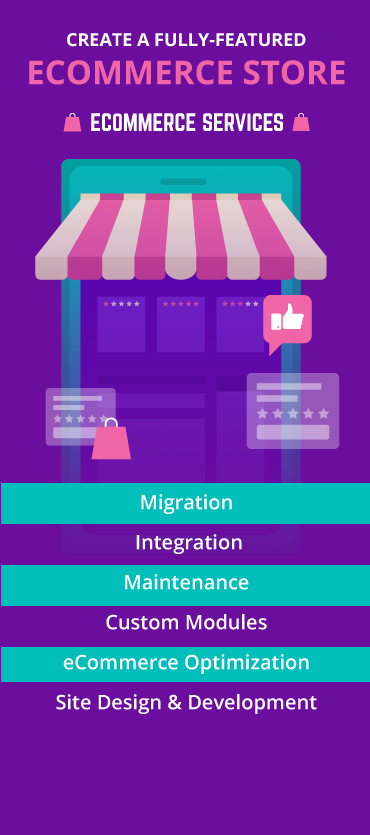There is a ton of competition online for eCommerce businesses. So, setting yourself apart has become essential to survive and thrive in the marketplace. But the dynamic digital landscape and diversity of platforms pose unique challenges for online vendors to generate and convert leads.
Keeping this in mind, this blog post discusses the top 9 eCommerce marketing strategies and best practices that will help level up your eCommerce business in 2021.
Let’s dive in.

9 Best eCommerce Marketing Strategies for Your Business
1. Content Marketing
Content marketing focuses on creating relevant, valuable, and helpful content consistently to cultivate audience loyalty. There are numerous content formats ranging from blog posts, eBooks, infographics, whitepapers, case studies, and guides to create high-quality content that builds brand authority and addresses the audience’s pain points.
Some ways of using content marketing for eCommerce:
- Optimize product page copy.
- Write guest posts.
- Include keyword-driven FAQs on the website.
- Create shoppable content.
2. Video Marketing
Video is the most popular and preferred content form used by marketers to sell products and services. Videos help demonstrate a product in a way that written text and static images can’t. According to a report, 94% of marketers say that videos help users better understand their products or services and 84% say they help improve conversion rates.
Some ways of using video marketing for eCommerce:
- Demonstrations of products in action.
- Tutorials on using the products.
- Interviews with niche experts.
- Product comparison to that of competitors’.
- Storytelling around the products.
- Testimonials from happy customers.
3. Email Marketing
Emails are a simple, low-cost, and highly profitable marketing tool. But this also means that your leads and customers are flooded with emails every day. So, to stand out, personalize your emails whenever possible and provide value to your audience at every step. Emails are all about building long-term relationships with your audiences. And when done right, they can bring an ROI of as high as 4400%.
Applications of email marketing in eCommerce:
- Informing prospects about offerings.
- Nurturing leads to make purchases.
- Engaging customers with the brand through newsletters and other resources.
- Retargeting customers to abandoned carts.
4. Social Media Marketing
Reports suggest that 54% of users use social platforms to research products. By creating informative content, social media marketing can bring high organic results. However, its impact can be boosted further by investing in paid ads. Paid ads can be targeted to a specific audience segment and automated using social ad placement tools.
Some ways to create social media content for eCommerce:
- Product reviews from customers.
- Hashtags for enhanced content discoverability.
- Interactions with audiences.
- Inserting tweetable quotes.
5. Influencer Marketing
Influencer marketing focuses on people or organizations that influence your target audience. Influencers are essentially social media stars with a dedicated niche following, who are genuinely interested in their advice/recommendations. By collaborating with relevant influencers, you can build trust and engagement among their audiences and leverage it to increase your traffic.
Different types of influencers:

6. User-Generated Content
Apart from influencers, leveraging user-generated content is another effective and rather inexpensive way to promote your eCommerce business. Be it writing reviews on your site or participating in a social media challenge, anywhere your audience engages is beneficial for your brand. Having said that, you also need to have a strategy in place to deal with the negative feedback.
Different types of user-generated content:
- Social media posts
- Videos (product unboxing or review)
- Hashtag campaigns
- Surveys
- Interactive events with customers
7. Search Engine Marketing
Search engine marketing includes both SEO and paid advertising. SEO is an organic way to optimize your web content for Google rankings. With tools like Moz, Ahrefs, and SEMRush, you can conduct keyword research and incorporate them into your content to bring traffic.
Pay-per-click and product-specific ad campaigns enable you to purchase the top spot on Google SERPs. When potential buyers enter a related search term, they see the link to your website which increases the likelihood of purchase.
8. Local Marketing
Though the digital world has blurred regional boundaries, some eCommerce businesses with local appeal products can be best promoted through local marketing.
Local marketing narrows your target audience and enhances the conversion rates by allowing you to provide incentives like free shipping. By using targeted keywords and tagging geographical locations, you can localize your brand for your audiences.
9. Chatbots
Chatbots provide live assistance to your customers by automatically answering their questions and offering information. They help up-sell or cross-sell products, resolve payment issues, and mitigate any objections that may arise during the checkout process.
When used efficiently, chatbots are successful in reducing cart abandonment and increasing engagements. They can be easily embedded as an extension to an eCommerce site, leading to improved functionality.
eCommerce Marketing Best Practices
Besides the above-explained strategies, there are some creative ways to optimize your eCommerce marketing for the best results.
1. Personalization
Companies that use personalization experience a 5-15% increase in revenue. Providing birthday discounts, displaying recommended products, and sending customized follow-ups for abandoned carts expedite the buyer’s journey and improves their shopping experiences.
2. Responsive Web Design
Make it a point to integrate all the channels customers use to interact with your brand. The user experience of your online store should be the same irrespective of the device or operating system that the user might be using.
3. Right eCommerce Platform
The eCommerce platform you use should be in alignment with your marketing goals. Cloud hosting, content management, reporting analytics, etc., are some important features that should be customized for your needs.
Conclusion
To conclude, the best way to grow your eCommerce store is to test and find out what works best for you. So, try out these eCommerce marketing strategies to scale your business and boost sales.
Need Help Building Your eCommerce Marketing Strategy? Contact Us!











